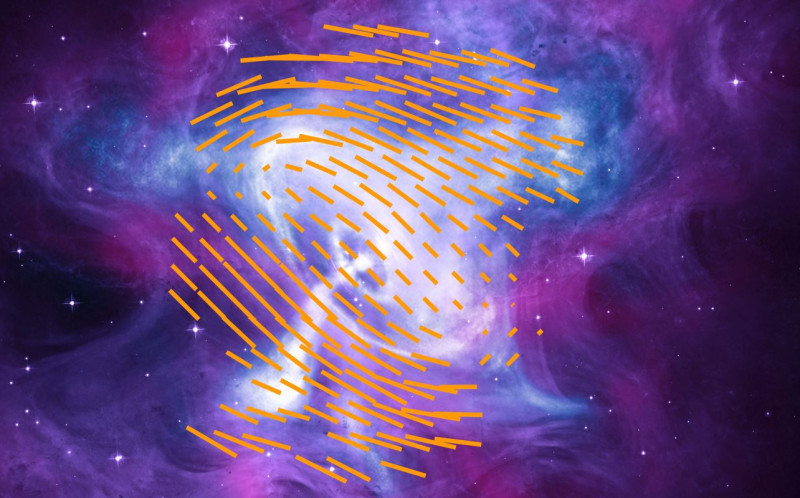Spectacular Nebula Caused by Supernova in Earth Year 1054 – What Evidence Scientists Found
The project started 50 years ago. The technology at the time, however, could not deliver the expected result. From 1971 to the present, humanity has made leaps and bounds of progress, with the result that today, in 2023, we are able to “see” much more clearly, much more specifically, much more detailed, worlds that are several thousand light years away.
NASA has released a photo of the Crab Nebula, located 6,500 light-years away. In 1971, a rocket had taken off bound for the impressive nebula and had given some data to scientists. Now, however, it is not necessary to send a spacecraft to study distant worlds. Modern satellites and telescopes outside the Earth’s atmosphere offer the most detailed images and data, which define the object of study with great precision.
More than 50 years after the original experiment, scientists have used IXPE to create a detailed, nuanced map of the Crab Nebula’s magnetic field, revealing more of its inner workings than ever before. The new results, published in the journal Nature Astronomy, help solve long-standing mysteries about the well-studied Crab Nebula and raise new questions for future study.
The IXPE data show that the Crab Nebula’s magnetic field resembles that of the Vela Pulsar Wind Nebula, which has a similar shape. But in the Crab Nebula, scientists were surprised, as the regions of magnetic field turbulence were more patchy and asymmetric than expected.
“This is a clear indication that even the most complex models developed in the past, using advanced numerical techniques, do not fully capture the complexity of this object,” said Niccolò Bucciantini, lead author of the study and an astronomer at INAF, in Arcetri Observatory in Florence.
The Crab Nebula resulted from a supernova that occurred in the year 1054. The explosion left behind a dense object called the Crab Pulsar, about the diameter of Huntsville, Alabama, or the length of Manhattan, but with the mass of about two Suns. The chaos of gases, shock waves, magnetic fields, and high-energy light and particles emanating from the rotating pulsar is collectively called the “pulsar wind nebula.” These extreme conditions create a strange environment that is not yet fully understood.
The team hoped to understand this extreme environment in a new way by measuring the X-ray polarization from the Crab Nebula, which shines brightly in X-rays. The X-ray polarization gives scientists clues about the direction in which the magnetic field it shows in different parts of a cosmic object, as well as how well ordered the magnetic field is. The geometry and perturbations of the magnetic field determine how the particles are shot towards the speed of light.
Scientists followed up with a satellite called OSO-8 in 1975, which also measured the X-ray polarization of the Crab Nebula. The rocket and satellite generally produced the same result: That the Crab Nebula has an average polarization of about 20%.
Across the entire nebula, IXPE found roughly the same average polarization as Weisskopf and colleagues did in the 1970s. But with more sophisticated instruments, IXPE was able to refine the polarization angle and examine differences in polarization across the entire object . Scientists see regions of high polarization in the outer regions of the nebula, light years away from the pulsar, where the polarization is lower.
This enabled scientists to investigate not only X-rays from the Crab Nebula but also those coming from the pulsar itself or the sphere of magnetic fields around it. The findings suggest that these X-rays originate in the region of the outer magnetic field, called the “wind” region, although exactly where and how is still unknown. Within the magnetic field, vibrations created by the pulsar’s “wind” propel particles near the speed of light.
Source :Skai
I am Terrance Carlson, author at News Bulletin 247. I mostly cover technology news and I have been working in this field for a long time. I have a lot of experience and I am highly knowledgeable in this area. I am a very reliable source of information and I always make sure to provide accurate news to my readers.











